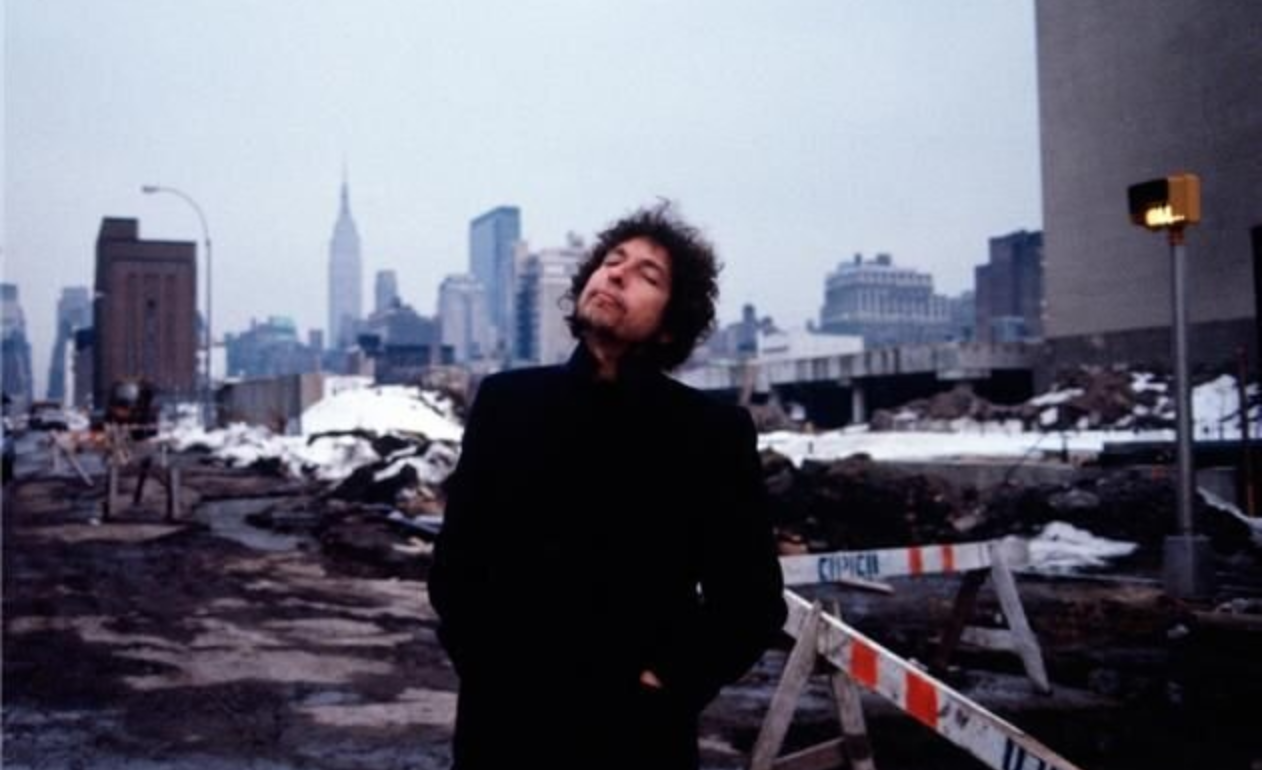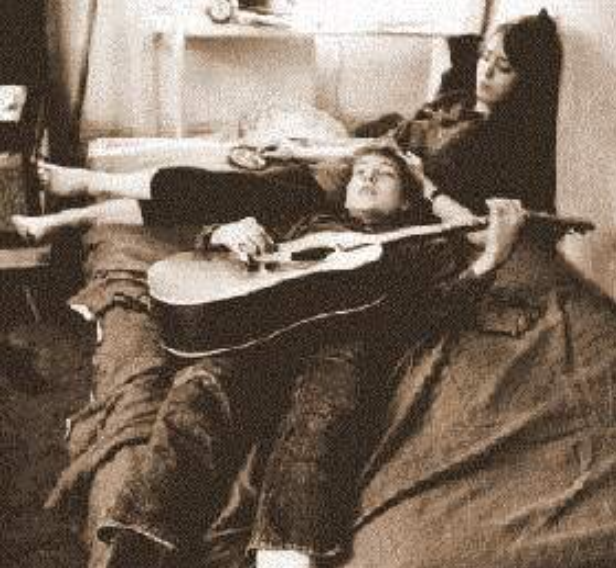New York through Bob Dylan's Eyes
Bob Dylan's work was crowned in 2016 when he was awarded the Nobel Prize in Literature for having “created new ways of expression in the tradition of American songs.” He played a role in spreading American culture worldwide and has influenced many artists, such as David Bowie, Neil Young, Paul Simon, and Bruce Springsteen. He now lives in Malibu, but New York was where he lived during what was arguably his most creative period.
Greenwich Village is a very different place today, from when Bob Dylan lived there. Even so, there are still landmarks of what was once the epicenter of folk music revival and birthing place of many talented artists.
Sometimes, all it takes to change the soul of a neighborhood is some new people moving in. In January 1961, Bob Dylan came to New York City, driving for twenty-hours with three guys from Minnesota. His destination was Greenwich Village, a bohemian neighborhood where singers, artists, and political activists resided together. With a high concentration of performance spaces around MacDougal Street, Bleecker Street, and Washington Square Park where street performers and artists frequented all times of the year, it was a perfect match for Dylan.
After slamming the car door shut, Dylan, still legally Robert Zimmerman, stepped foot for the first time in New York City. Walking into Café Wha? at 115 MacDougal Street, he was offered a chance to play harmonica with singer Fred Neil. At the time, his way of playing guitar was judged as barely acceptable and his voice as being too monotonous, but nonetheless, he seduced the crowd. This was the beginning of his New Yorker life.
Originally coming to New York to meet Woody Guthrie, his idol, he went to New Jersey to visit him at the hospital. At that time, Dylan’s “bible” was Bound for Glory, a story about the migrant workers during the Great Depression who traveled across the United States.
Dylan frequently stayed at the Hotel Earle [now Washington Square Park Hotel], in Room 305, at 103 Waverly Place, both upon his arrival in New York and later in 1964. Joan Baez makes a reference to this hotel in her love song about Dylan, Diamonds and Rust: “Now you’re smiling at the window of that crummy hotel over Washington Square”.
While the building no longer exists, one evening, Dylan met the owner of Gerde’s Folk City, at 11 W 4th Street, where he would later play. As Dylan wasn’t yet old enough, Mike vouched for him. Dylan would later say of Mike: “He became the Sicilian father I missed”.
In April 1961, Dylan played in front of NYU students at the Loeb Student Center, at 135 E 12th Street. Among the crowd was Susan Rotolo, an artist and painter, who would later become his wife. She is suspected of having had a huge impact on Bob Dylan's writing throughout his younger years.
In the 60’s, Dylan was an informal chronicler of social unrest in the United States. Some of his songs like Blowin’ in the Wind became anti-war songs.
In 1963, Dylan released an album called “The Freewheelin'“. The now-famous cover picture shows Dylan and his then-girlfriend Suze Rotolo walking down Jones Street, at the corner of West 4th Street, in Greenwich Village.
Ms. Rotolo wrote in A Freewheelin’ Time: A Memoir of Greenwich Villages in the Sixties, that Dylan “had an uncanny ability to complicate the obvious and sanctify the banal — just like a poet. […] He had in mind the pictures he wanted to paint; he just needed to find the right color mix to get him there.”.
Once a week, The Bitter End, a nightclub at 147 Bleecker Street, hosted new artists who were just breaking into the business. Bob Dylan was one of these artists. He frequented the nightclub and played pool while watching performances. He returned in 1975, when he was recording his album Desire. That same year, he performed a show at the club.
Among the places that welcomed Bob Dylan during his younger years are also: Fat Black Pussycat, at 105 MacDougal Street [now a Mexican restaurant called Panchito’s] where he wrote his hit “Blowin’ In The Wind” and Village Gate, at 158 Bleecker Street, where Dylan stayed with his friend, Chip Monck, who lived in the basement of the building. It was here that Dylan wrote “A Hard Rain’s A-Gonna Fall”.
Bob Dylan performed at Kettle of Fish [today Gaslight Cafe], at 116 MacDougal Street, which launched the “snapping fingers” tradition. As police would often be called by nearby tenants because of the loud clapping, patrons began to snap their fingers quietly to show appreciation to the performers. Thus a tradition was born.
Dylan briefly lived on one Sheridan Square, on the 4th floor where he stayed with ‘folk scene den mother’ Miki Isaacson. You could always find a folk singer crashing in Miki’s living room. Suze Rotolo lived in the apartment one floor below. This is where Dylan and Suze crossed paths and began dating.
Dylan and girlfriend would sit in the bar White Horse Tavern, at 567 Hudson Street, and listen to Irish Rebel songs performed by the Clancy Brothers and Tommy Makem. This bar is one of the oldest in New York City.
No longer content crashing on couches, Dylan found his first apartment at 161 West Fourth Street in December 1961 and he moved in with his girlfriend Suze. The couple paid $60 a month rent. The same place sold for $6 million in 2015.
In 1963, Dylan saw a performance of Bertolt Brecht’s The Threepenny Opera and heard the song Pirate Jenny, at Theatre de Lys [now the Lucille Lortel Theater], at 121 Christopher Street. He was deeply inspired by it, leading him to create masterpieces like “The Times They Are A-Changin’”, “Mr. Tambourine Man” and “A Hard Rain’s A-Gonna Fall”.
In 1964, as Dylan swiftly rose to fame, he and Suze parted ways. He also wrote a song inspired by her, “Tomorrow Is a Long Time”.
In the same neighborhood, there is a bookstore where Bob Dylan used to sit in the back and listen to records that the store had. It’s the Floklore Center, at 110 MacDougal Street. Though not widely known to the public, Dylan wrote “Talking Folklore Center” as a tribute to the center and its owner, Young. He also met Dave Van Ronk here at the center, who introduced him into the Greenwich Village music scene.
In 1969, Dylan purchased a townhouse on 94 MacDougal Street. “A.J. Weberman, one of his neighbors picked through the Dylan’ trash in a huge violation of their privacy. Weberman would also bring loads of people to the townhouse. After asking Weberman time and time again to stop, Dylan lost it and beat up Weberman on the street. It wasn’t long after when Dylan moved to Malibu in California”. Today, MacDougal Street is one of the liveliest streets of the city. Cafes, restaurants, bars, shops and music venues all fill the street.








